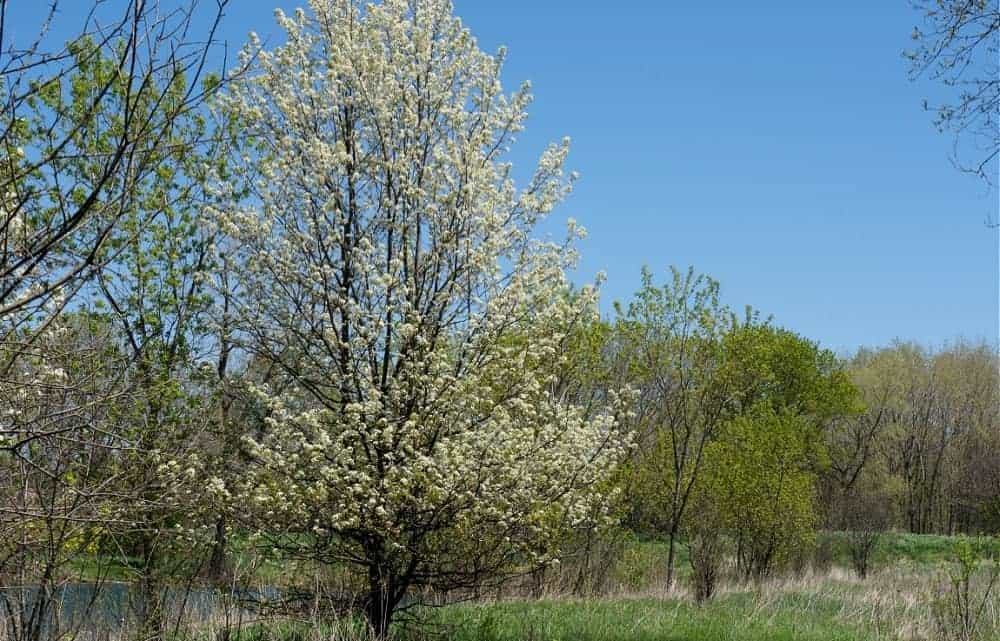Ornamental pears are beautiful trees on their own. But adding plants underneath them can enhance your landscape even more.
Lush foliage and colourful blooms under ornamental pears can make your garden look stunning.
And remember: ornamental pears are deciduous trees, except for the Everscreen variety.
That means the trees drop their leaves in winter, so the right companion plants can keep the space lively.
Plus, companion planting offers several benefits. Groundcover plants can suppress weeds, and flowers can attract beneficial insects.
Underplanting ornamental pear trees creates a healthy garden that looks wonderful year-round.
Companion Planting Chart | Flowers | Foliage Plants | Australian Native Plants | Bad Companion Plants | Companion Planting Tips
Growing Conditions for Ornamental Pear Tree Companions

When underplanting ornamental pears, look for plants with similar needs. This makes them easier to care for and ensures they thrive together.
Ornamental pears and their companions grow best in these conditions:
- Occasional watering
- Rich, well-drained soil
- Cool to warm temperate climates
Also, pick plants that can tolerate dappled or partial shade as they’ll be grown under the trees.
Ornamental Pear Tree Companion Planting Chart
Growing ornamental pear trees is rewarding in itself. Having the right plants underneath them makes your garden even more inviting!
When choosing companion plants for the ornamental pear, think about the landscape design you want to achieve.
Growing the same plant below ornamental pears creates a formal and polished look.
Meanwhile, growing many different plants beneath the trees can make your garden look fuller and layered.
So, what to plant under ornamental pear trees? Check out this chart for the best combinations:
| FLOWERS | FOLIAGE PLANTS | AUSTRALIAN NATIVE PLANTS |
|
|
|
NOTE: Before planting, check if any of these plants are considered invasive in your area.
Underplanting Ornamental Pear Trees with Flowers
Growing flowers under your ornamental pear can brighten your garden!
Spring blooms complement the ornamental pear’s delicate white flowers.
In winter, a pop of colour keeps the space cheery when the ornamental pear branches are bare.
Blossoms also add charm as the trees’ foliage changes from dark green in summer to warm oranges in autumn.
Aquilegias
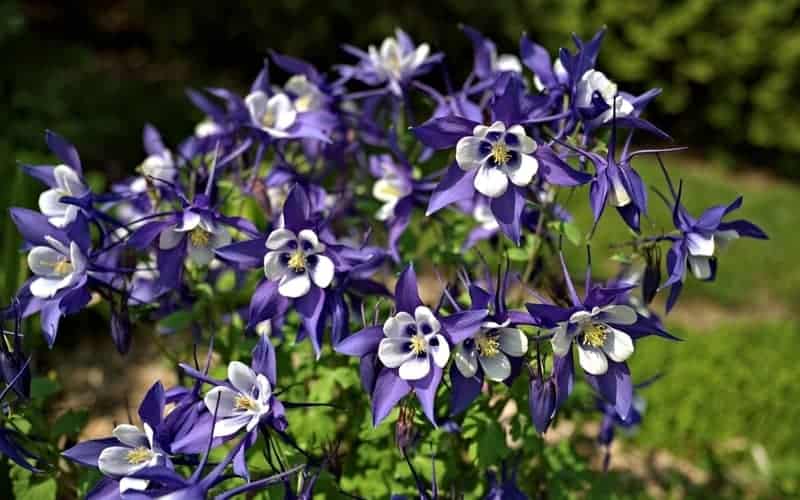
Plant Aquilegia under your ornamental pears for a colourful display!
Aquilegia, also called ‘Columbine,’ produces bell-shaped flowers with distinct spurred petals.
They appear in late spring or summer and come in various hues.
Some Aquilegia varieties have blue, orange, pink, or purple blooms. Others are even bi-coloured!
Their striking blossoms contrast beautifully against the ornamental pear’s green foliage.
Aquilegias thrive in cool temperate climates and are frost-tolerant. They grow in dappled to full shade and rich, well-draining soil.
Daffodils

Like ornamental pears, daffodils bloom in spring. Together, they create a stunning view!
Daffodils, or Narcissus, produce trumpet-shaped flowers in either white or yellow.
No matter the colour, they go well with ornamental pears’ snow-like blossoms.
As for climate, daffodils are adaptable. They can thrive in cool to warm temperate or subtropical conditions.
They also tolerate most types of soil, as long as it’s rich and well-draining. For best results, amend the soil with organic matter before planting.
You can plant daffodils in raised garden beds for better drainage.
Hellebores
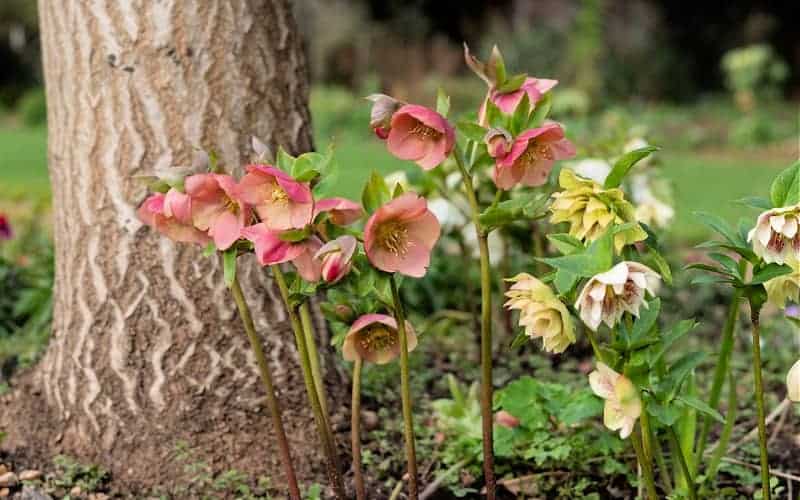
Hellebores (Helleborus) have cup-shaped blooms that appear in winter. They’ll add a splash of colour as the ornamental pear sheds its leaves!
The flowers may be green, pink, purple, or white, depending on the variety.
These beauties last until early spring, just in time for the ornamental pear to bloom.
Apart from the flowers, hellebores are known for their dense, evergreen foliage.
Their leaves are dark green and palmate with a leather-like appearance.
Underplanting Ornamental Pear Trees with Foliage Plants
Foliage plants are grown for their decorative leaves.
Under ornamental pears, foliage plants can add visual interest to your landscape!
Cast-iron plants
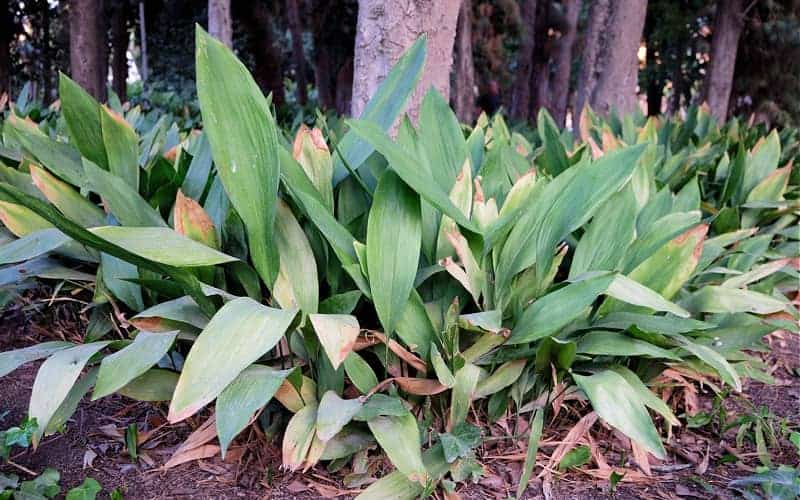
If you live in a warm climate, you can grow cast-iron plants (Aspidistra elatior) under ornamental pears.
Cast-iron plants are handsome evergreen perennials with sword-shaped, green leaves.
Different varieties have distinct leaf patterns. The ‘Variegata’ cast-iron plant has lime green stripes, while ‘Milky Way’ has white flecks on the leaves.
Like ornamental pears, cast-iron plants are hardy and low-maintenance.
They thrive in part to full shade with well-drained soil. Established plants only need watering during prolonged dry seasons.
Coral bells
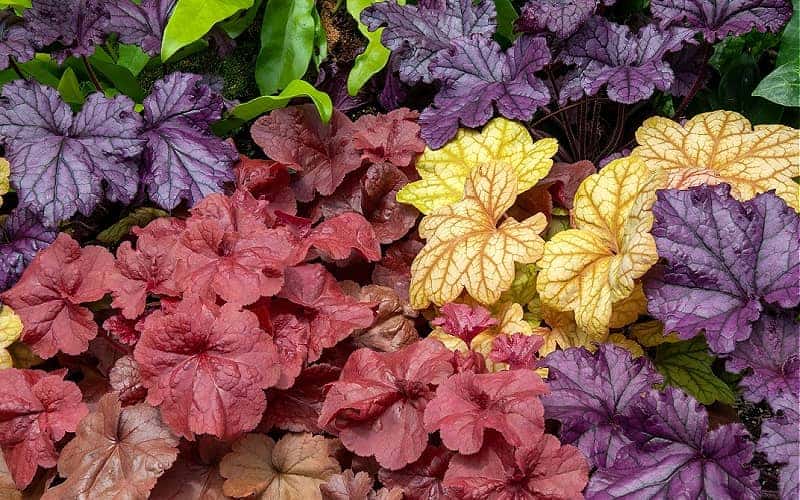
Coral bells, or Heuchera, add vibrant foliage beneath ornamental pear trees.
Heuchera varieties come in many shades — from deep purples to bright greens to pale silver.
Leaf shape varies, too. Some are heart-shaped, while others are palm-like with intricate patterns.
Coral bells thrive in part shade, as the leaves need protection from direct sunlight.
They’re adaptable to various climates and are not fussy with soil as long as it’s well-draining.
Hosta

Hostas or ‘Plantain Lilies’ have a mounding growth habit, which makes them excellent groundcover plants under ornamental pears.
Hostas are primarily grown for their attractive foliage. The leaves can be blue, gold, and green with parallel veins.
As a bonus, hostas produce gorgeous white or purple flowers in tall stalks, usually in spring and summer.
Hostas thrive in the shade and well-draining soil. They’re also very hardy, tolerating both drought and frost.
Moreover, these plants can live for 30 years or more with minimal care.
Growing Australian Native Plants Under Ornamental Pear Trees
Many Australian native plants pair well with ornamental pears.
Growing native plants also creates a hardy and biodiverse garden.
Correas
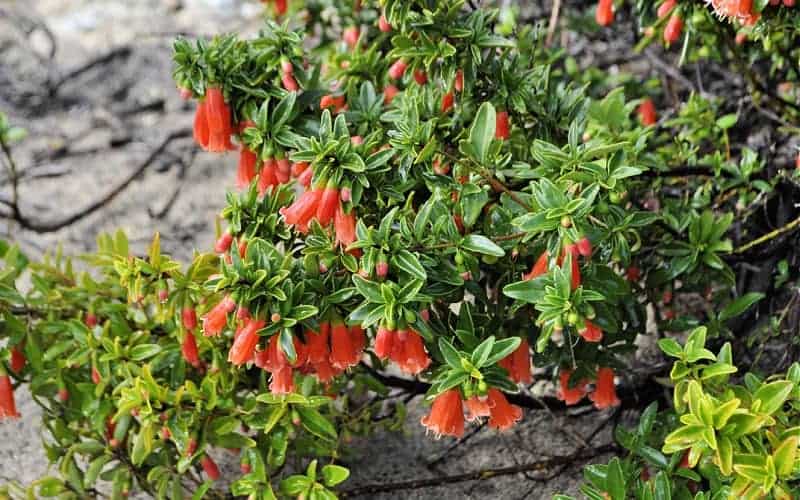
Correas, or ‘native fuchsias,’ are frost-tolerant, flowering plants.
They thrive in part or dappled sunlight and well-drained soil, which makes them ideal under ornamental pears.
Most Correa plants flower in winter to spring, but some do so randomly throughout the year.
Their tubular, bell-shaped flowers may be green, orange, pink, red, or white. Some are even two-toned!
Low-growing types — like Correa alba ‘Prostrate’ and Correa pulchella — work well for borders or as groundcover.
Taller varieties — like Correa glabra and Correa reflexa — create natural hedges or visual barriers.
Violets
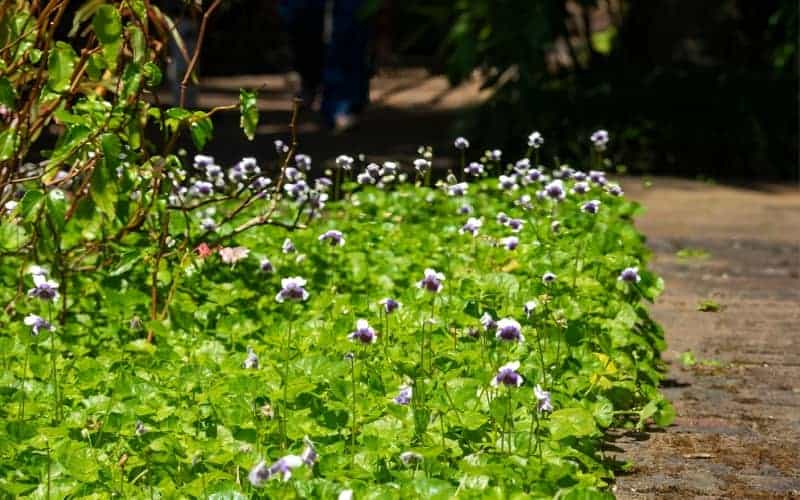
Native violets (Viola hederacea) are great Australian plants for dry shade. Under ornamental pear trees, they make an elegant groundcover.
They can also be used as border plants.
Their heart-shaped, green leaves and delicate violet flowers enhance any landscape.
In mild climates, Australian violets can bloom nearly year-round.
These low-maintenance plants prefer well-draining soil and occasional watering.
Pruning isn’t strictly necessary. Just remove spent flowers and dead leaves, and trim back any overgrown parts.
Westringia
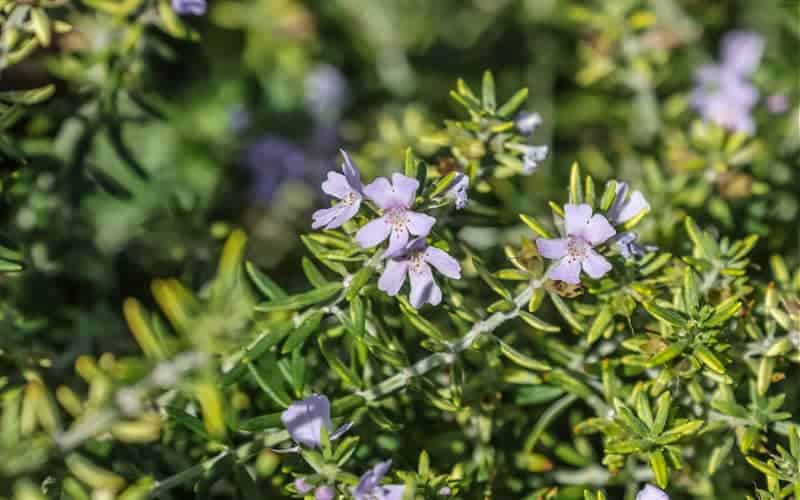
Westringia fruticosa or ‘Coastal Rosemary’ is great for formal hedges under ornamental pears!
This Australian native plant is known for its dense, grey-green foliage.
It’s not as showy as other flowering plants, but its tiny white or pale blue flowers can add subtle beauty to gardens.
Once established, Westringia is very hardy. It can tolerate frost, drought, and even humid conditions.
Westringia grows best in full sun to part shade and well-drained soil.
What Not to Plant With Ornamental Pear Trees
Juniper trees and other Rosaceae plants are bad companion plants for ornamental pears.
Juniper trees are a risky companion since they can lead to a common ornamental pear tree problem — pear rust.
This fungal disease needs both a juniper plant and a pear tree to survive.
Juniper trees are a risky companion. Pear rust, a fungal disease, needs both a juniper plant and a pear tree to survive.
Avoid rosaceae plants like apples, cherries, and edible pears, too.
Since ornamental pears belong to the Rosaceae family, these plants might compete for nutrients.
Closely related plants are vulnerable to the same diseases. This means infections can spread quickly among them.
Tips for Underplanting Ornamental Pear Trees
When underplanting ornamental pear trees, consider how much sunlight reaches the area.
The canopy of an ornamental pear usually creates dappled shade, but the density can vary. This can affect the growth of the plants underneath.
Also, choose non-invasive plants to avoid overcrowding and competition.
Landscape upkeep is important, too. Opt for low-maintenance plants that need minimal pruning to keep your space tidy.
For an extra neat and well-refined look, consider bringing in a gardening expert!
They can also help you select the best plants to grow with ornamental pears and ensure they thrive together.
Lastly, check for pests and diseases regularly to keep your plants healthy.

